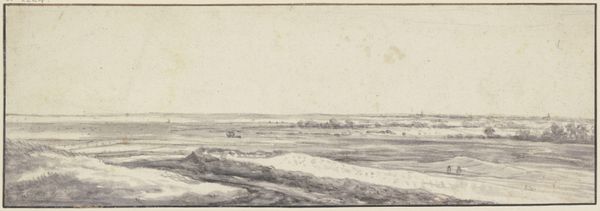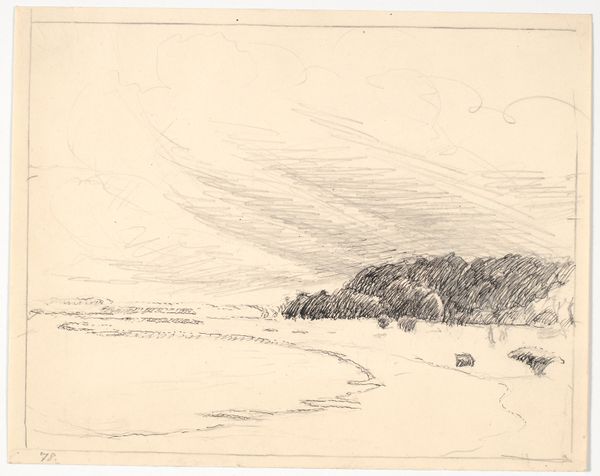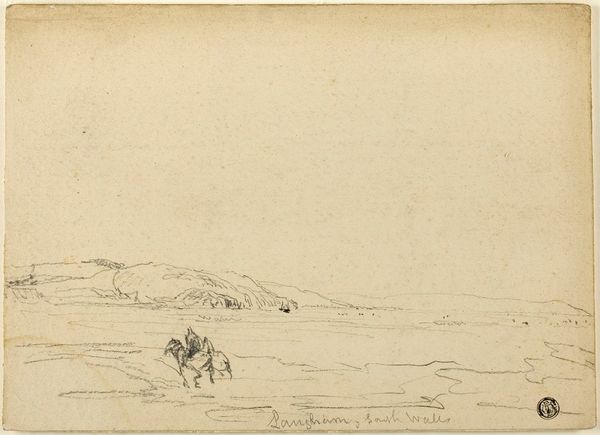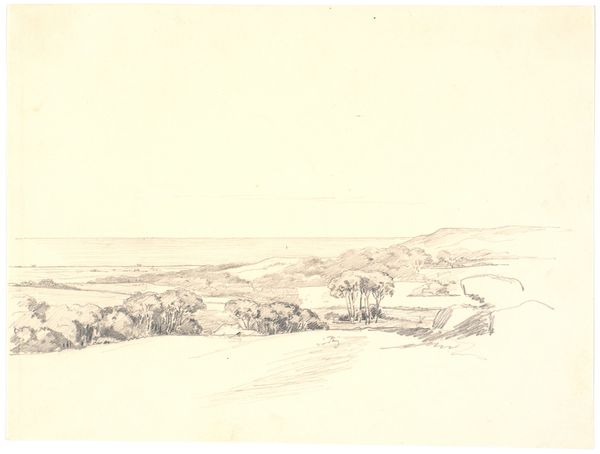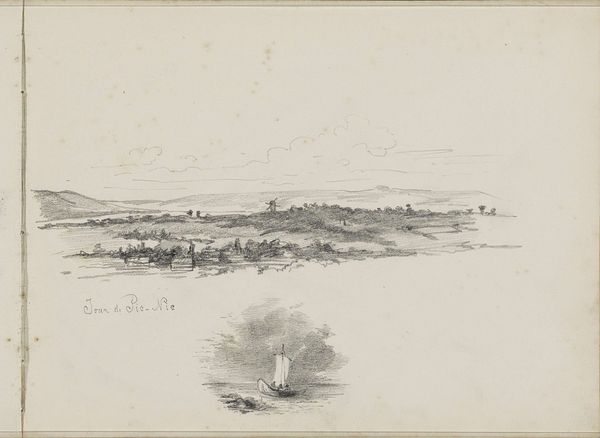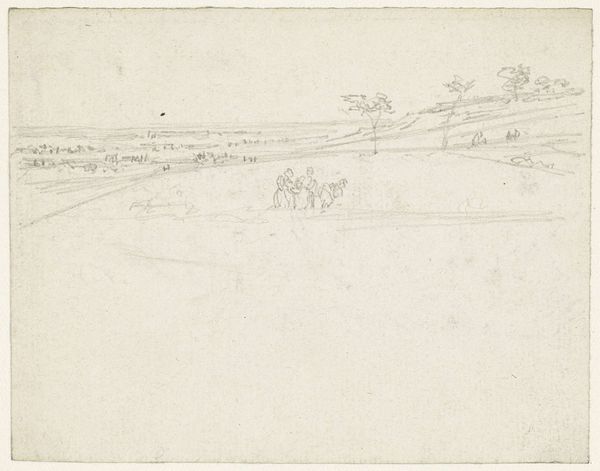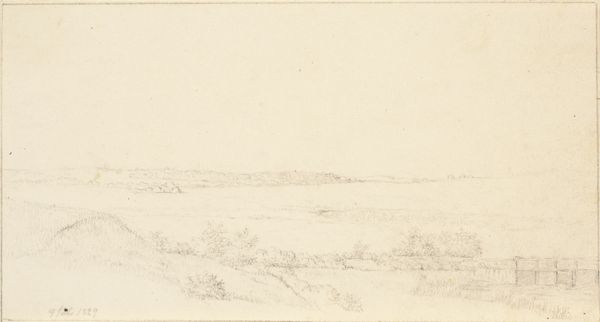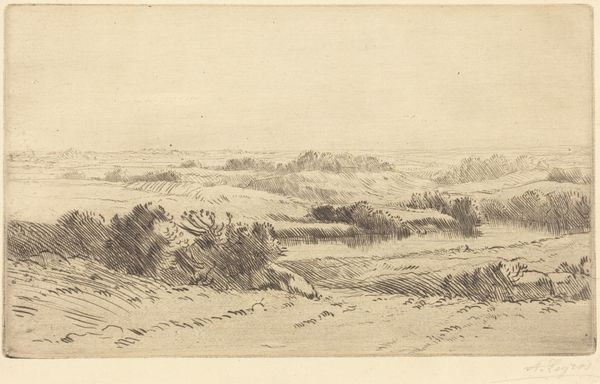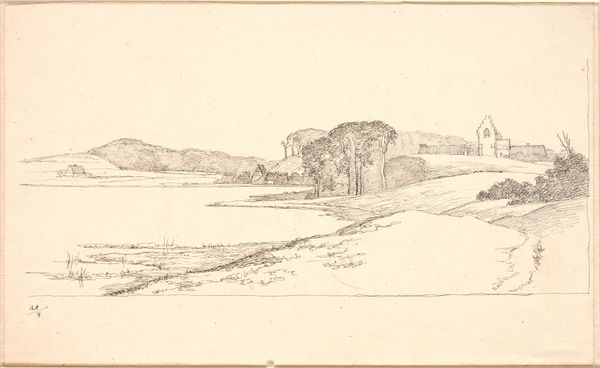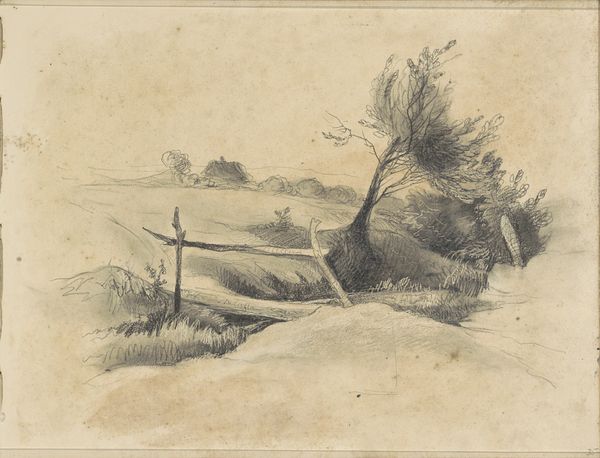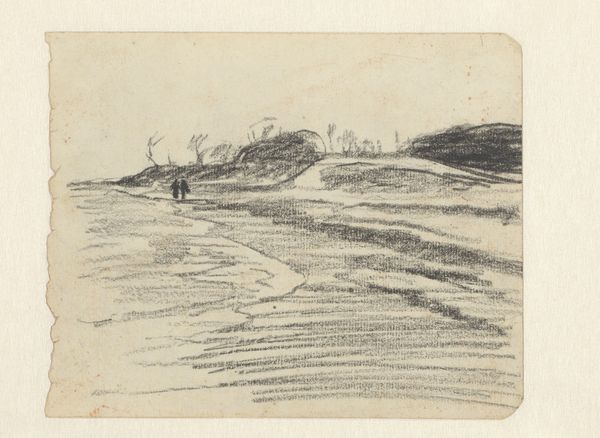
drawing, pencil, graphite
#
pencil drawn
#
drawing
#
pencil sketch
#
landscape
#
charcoal drawing
#
pencil drawing
#
romanticism
#
pencil
#
graphite
Copyright: Rijks Museum: Open Domain
Curator: So, here we have Johannes Tavenraat's "Landschap in Beek," created in 1844. It's a pencil and graphite drawing currently held at the Rijksmuseum. Editor: The first thing that strikes me is the simplicity of the medium against the vastness it tries to capture. There’s a quiet melancholy to it, don't you think? Curator: Absolutely. Tavenraat, aligned with the Romanticism movement, often found beauty in the Dutch landscape. You sense that reverence for nature, even in a seemingly simple sketch. Editor: I see it as a record of labor—Tavenraat, pencil in hand, mediating the landscape for consumption. Graphite in the 1840s was already an industrialized material. So what appears bucolic has its roots in burgeoning industrialization. Curator: Interesting perspective. It also reads as a very intimate scene, as if we are seeing the world directly through the artist’s eyes. There’s an almost dreamlike quality, especially with the soft, blurred horizon. Editor: Precisely. It’s the mass production of pencils and paper that afforded artists like Tavenraat this intimacy and immediacy. A connection facilitated by these ubiquitous materials. It makes you wonder about access, though—who was buying these landscapes? Curator: Probably an emerging middle class, eager for a slice of the Dutch countryside. Editor: So it’s not just about seeing the world through the artist’s eyes but also the consumer's wallet. Even the framing speaks to value, to its status as something worthy of preservation and display. Curator: Well, it’s certainly stood the test of time! It makes me wonder about his emotional state, wandering around the countryside creating works like this... the wind, the light... It feels both precise and full of emotion. Editor: Agreed. By examining how this art was made, distributed, and consumed, we gain insight into the culture of the time, moving beyond just the "dreamlike quality" you mentioned and entering the marketplace of Romanticism. Curator: Well said. It gives the artwork more layers, making the landscape—and Tavenraat's intentions—feel less like a given and more like an open question. Editor: Precisely. Art history isn't just about admiring what's on the surface but interrogating its origins and circulation.
Comments
No comments
Be the first to comment and join the conversation on the ultimate creative platform.
